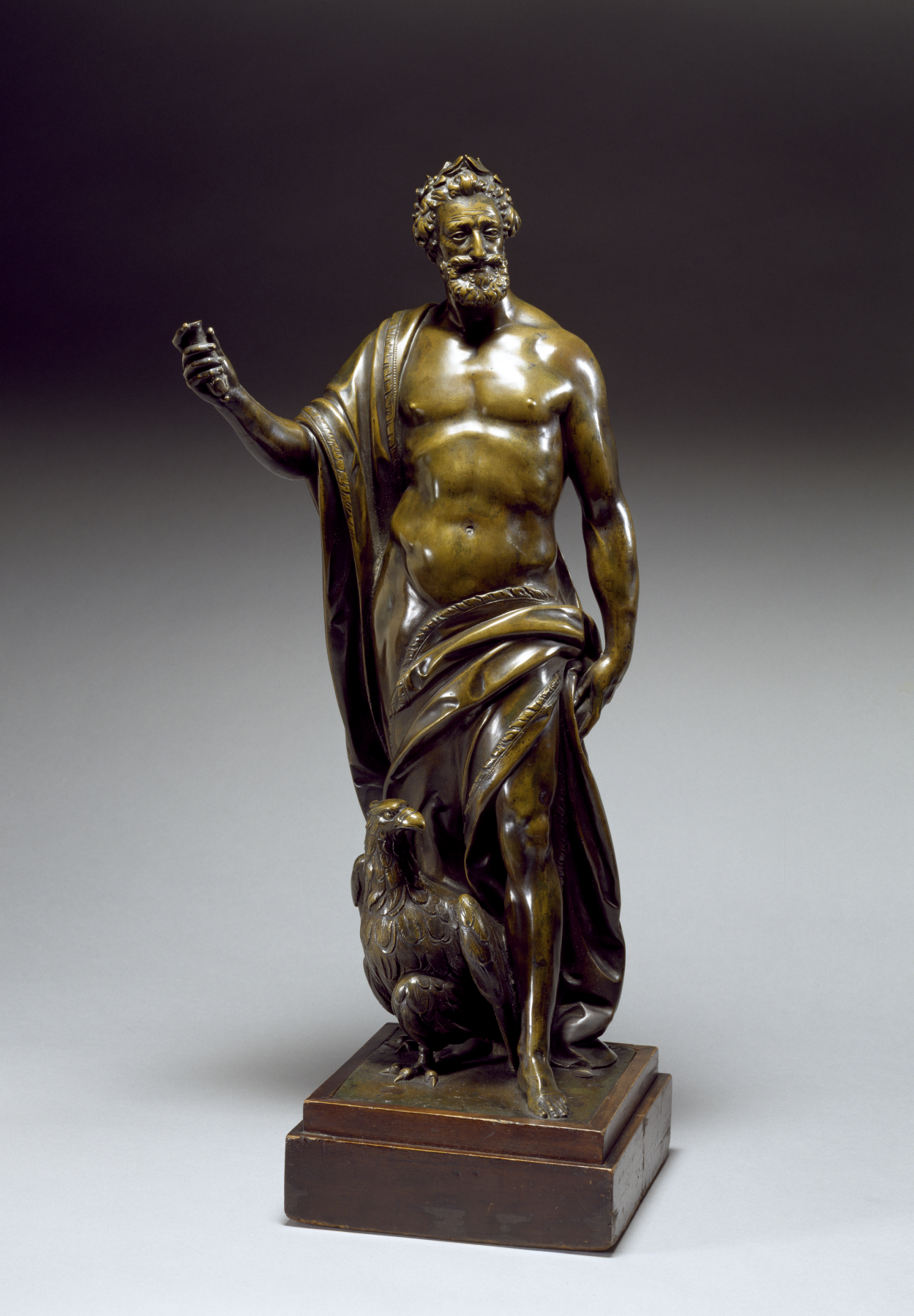Portrait of Henri IV, King of France, as Jupiter
(Baroque Europe )
Having himself depicted as the lightly clothed, muscular figure of Jupiter, king of the Olympian gods, is surely meant to suggest that Henry felt supremely confident of his invincibility. It is a clever political ploy of one who felt enemies on every side. His concerns were justified, as he was assassinated in 1609. The fierce eagle was Jupiter's pet and a suitable attribute of kingly ambition.
There are two other portraits of the king as well as the companion statuette of his wife Marie de' Medici nearby. These statuettes do not show the same precision and finesse as the bust and may be products of Jacquet's workshop, made to be given as gifts to supporters.
Provenance
Provenance (from the French provenir, 'to come from/forth') is the chronology of the ownership, custody, or location of a historical object. Learn more about provenance at the Walters.
Jacques Seligmann, Paris, by purchase; Henry Walters, Baltimore, 1910, by purchase; Walters Art Museum, 1931, by bequest.
Exhibitions
| 1999-2000 | Vive la France! French Treasures from the Middle Ages to Monet. The Walters Art Gallery, Baltimore. |
| 2000 | Small Northern European Portraits from The Walters Art Gallery, Baltimore. National Gallery of Art, Washington. |
| 1971-1972 | World of Wonder. The Walters Art Gallery, Baltimore. |
Conservation
| Date | Description | Narrative |
|---|---|---|
| 3/29/1961 | Treatment | cleaned |
Geographies
France, Paris (Place of Origin)
Measurements
18 5/16 in. (46.5 cm)
Credit Line
Acquired by Henry Walters, 1910
Location in Museum
Accession Number
In libraries, galleries, museums, and archives, an accession number is a unique identifier assigned to each object in the collection.
In libraries, galleries, museums, and archives, an accession number is a unique identifier assigned to each object in the collection.
54.667


